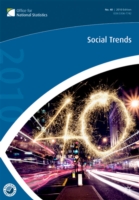基本説明
Presents controversial but compelling ideas in developing a clear understanding as to why historical linguistics has had significant success in some domains, such as phonological history, and why it is considerably less successful in others.
Full Description
This book goes beyond the boundaries of a standard text, using controversial and compelling ideas to explore the relationship between fundamental concepts in historical linguistics.
An original and engaging introduction to the subject of historical linguistics
Presents controversial but compelling ideas in developing a clear understanding as to why historical linguistics has had significant success in some domains, such as phonological history, and why it is considerably less successful in others
Explores the relationship between fundamental concepts in historical linguistics, topics such as 'language' and 'change', and corresponding notions in contemporary (synchronic) linguistic theory
Features extensive discussion of traditional and theoretically-oriented historical work in the domains of phonology and syntax.
Contents
Introduction. Part I: "Language" and "Language Change": Preliminaries.
1. What is "Language"?.
2. Linguistic Artifacts: Philology.
3. What is a "Descent" Relationship?.
Part II: Phonological Change.
4. Galilean-Style Phonology.
5. The Traditional Approach.
6. In-Depth Consideration of Selected Issues.
7. The Regularity of Sound Change.
Part III: Syntactic Change.
8. What is Syntactic Change?.
9. The Diachrony of Clitics: Phonology and Syntax.
Part IV: Reconstruction Methodology.
10. Reconstruction Methodology.
Part V: Concluding Remarks.
11. Synchronic and Diachronic Linguistics.
References.
Index






